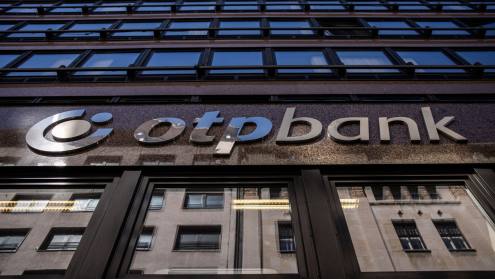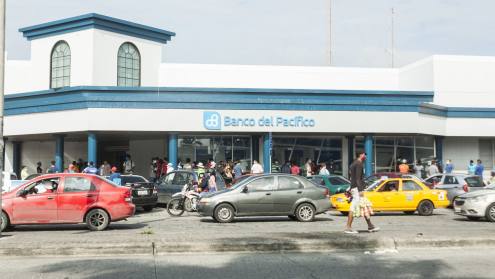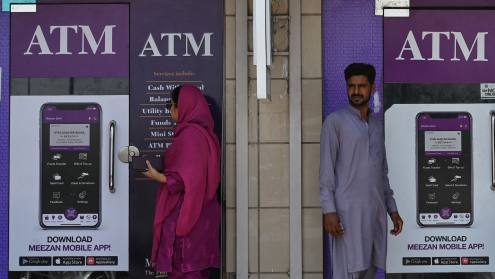After a difficult start to the Covid-19 pandemic, the economies of the Commonwealth of Independent States (CIS) managed to weather the fallout from the virus – as well as widespread political turmoil – relatively well in 2021 and, thus, their banking sectors prospered.
Moldova, for example, increased its gross domestic product (GDP) by 13.9%, while Tajikistan’s economy grew by 9.2% and Uzbekistan’s by 7.4%. Belarus recorded the lowest GDP growth rate (2.5%) of the republics in The Banker’s Top 100 CIS Banks 2022.
There are eight countries included in this year’s ranking, down from 11 in 2021. As in previous years, we have not included Russia; this year, we have also excluded Ukraine and Georgia, as former members of the organisation. In addition, Turkmenistan’s State Bank for Foreign Economic Affairs, the country’s only bank in the 2021 ranking, and its compatriots did not have 2021 financial results available in time to be included.
Sound metrics
The CIS’s economic growth story is reflected in the improved fundamental metrics of its banks. The aggregate Tier 1 capital of the lenders included in the ranking increased by 11.1%, to $22.2bn, while the total asset base expanded by 15.2%, to $185.7bn. Aggregate pre-tax profits (PTP) rose by 13.3%, to $4.2bn.
Impressively, only 10% experienced drops in Tier 1 capital in 2021, compared to more than half in last year’s ranking. Citibank Kazakhstan, an affiliate of Citigroup which has been operating in the country since 1994, saw the biggest reduction (23.6%). Uzbekistan’s Tenge Bank, a subsidiary of Kazakhstan’s Halyk Bank established in 2019, saw the biggest surge in Tier 1 (228.7%) among the cohort.
Only eight of the 100 lenders saw a contraction in total assets. Kyrgyzstan’s Keremet Bank (previously called Rosinbank until 2018 when the National Bank of the Kyrgyz Republic became the main owner) experienced the biggest drop in total assets, of 21.2%. Bank Freedom Finance Kazakhstan, which specialises in providing financial services to retail and small enterprise customers, saw the biggest rise (366.3%).
However, increasing profits proved to be more challenging for the cohort. Twenty banks saw a drop in PTP; in addition, five lenders moved from profit to loss, three of them being Armenian banks. Uzbekistan’s Qishloq Qurilish Bank (QQB), a majority state-owned commercial bank, saw the biggest drop (88.1%) in PTP. QQB was included in the list of state banks that the government is targeting to privatise by end-2025, according to Fitch. Kyrgyzstan’s RSK Bank, a commercial bank which the government has reorganised into an export-import bank, recorded the biggest jump in PTP (904.6%) in 2021.
Kazakhstan and Uzbekistan have the greatest number of banks in the 2022 ranking, at 19 apiece, followed by Armenia with 16 lenders. With $3.6bn in Tier 1 capital – more than double its nearest rival – Kazakhstan’s Halyk Bank remains the largest lender in the CIS, a position it has held for multiple years. It is joined by compatriots Jusan Bank (formerly Tsesnabank), Sberbank Kazakhstan and ForteBank in the top 10. While all 10 banks improved their Tier 1 position, Jusan Bank and Uzbekistan’s Agrobank were the only lenders to record double-digit rises.
Operational competence
The Banker has run its best-performing bank methodology against the largest five or fewer bank holding companies (excluding foreign-owned subsidiaries (FOS)) by Tier 1 capital in five CIS republics.
Ameriabank, a universal bank offering corporate, investment and retail banking services, has secured the accolade for the overall best-performing lender in Armenia, overtaking Converse Bank, which has fallen to fifth position. Ameriabank topped the table in profitability and leverage. In 2021, it increased its PTP by a whopping 132.4%.
In Azerbaijan, Expressbank has leapfrogged its four largest competitors (excluding FOS) to become the best-performing bank in the country. The commercial bank, which has recently expanded into consumer lending, outperformed its peers in profitability, asset quality, return on risk, soundness and leverage. Importantly, it moved from loss making into profit in 2021.
Moldindconbank, a Moldovan universal commercial bank, has regained the title as overall best-performing bank in the country, after losing out to Victoriabank last year. Moldindconbank topped the growth, profitability, operational efficiency and return on risk categories. It expanded its asset base by 11.3% and recorded a 68.1% increase in PTP.
Kazakhstan’s largest lender Halyk Bank is also its best performer, coming out on top in growth, profitability and operational efficiency. The commercial savings bank placed second in the other categories, with the exception of liquidity, where it came last among its peers. Halyk Bank posted a 31.3% jump in PTP and is among the CIS’s top 10 for return on capital.
Among Uzbekistan’s largest bank holding companies (excluding Asakabank due to lack of disclosure), Agrobank comes out as a lead performer, particular in the soundness and leverage metrics. The state-owned lender acts as an agent for state-sponsored subsidised lending to small and medium-sized enterprises and retail clients in rural regions, according to Fitch.
While 2021 provided space for the CIS banking sectors to recover, Russia’s subsequent invasion of Ukraine, as well as skyrocketing inflation, will prove a challenging backdrop for end-2022 results.













